As an Amazon Associate, I earn from qualifying purchases with no additional costs for you.
Underneath the sunflower fields and vast prairies of Kansas, locals and visitors can uncover all sorts of unique rocks and minerals. This guide will reveal all the collectible rocks, minerals, and gemstones that rockhounds retrieve from the Sunflower State.
When traveling in the Sunflower State, some common rocks and minerals you can unearth include:
- agate,
- limestone,
- geode,
- shale,
- galena,
- dolomite,
- opal,
- sphalerite,
- and anhydrite.
Just as every ship needs a rudder, every rockhound needs information before searching for rocks and minerals. This guide of Kansas’ common rocks and minerals will lead you to the best treasures for your collection.
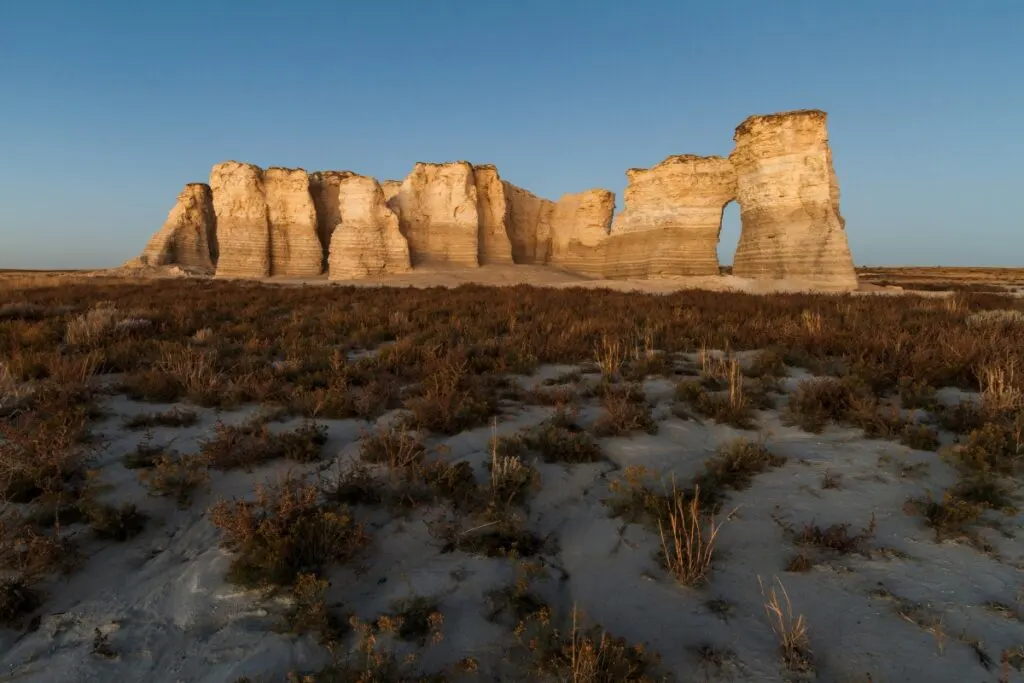
If you are interested in checking out the best rockhounding tools you can find them by clicking here (Amazon link).
What Rocks Are Found in Kansas
The Sunflower State boasts a wide assortment of rocks, such as:
Agate

| Location | GPS Coordinates |
|---|---|
| Solomon River | 39.127838, -97.714116 |
| Republican River | 39.062929, -96.849603 |
| Big Blue River | 39.217220, -96.550747 |
| Smokey Hill River | 38.796277, -99.696578 |
| Topeka | 39.077553, -95.645206 |
| Carneiro | 38.741674, -98.029975 |
Would you be surprised to find a Lake Superior Agate in Kansas? While people generally would not expect to find this particular type of agate in Kansas, the glacial activity of the past carried these rocks into the state. So, because of glacial drift, rockhounds often collect gorgeous Lake Superior Agates from the Sunflower State.
Another popular type of agate that’s common in Kansas is the moss agate, known for its rich green colors and unique patterns. If you’re on the hunt for moss agate, there’s plenty of it in the southern areas of Kansas.
There are many Kansas rivers that are known for their agates, including the Solomon River, Republican River, Big Blue River, and Smokey Hill River. Topeka and Carneiro are also two popular locations for agates in the Sunflower State.
Limestone
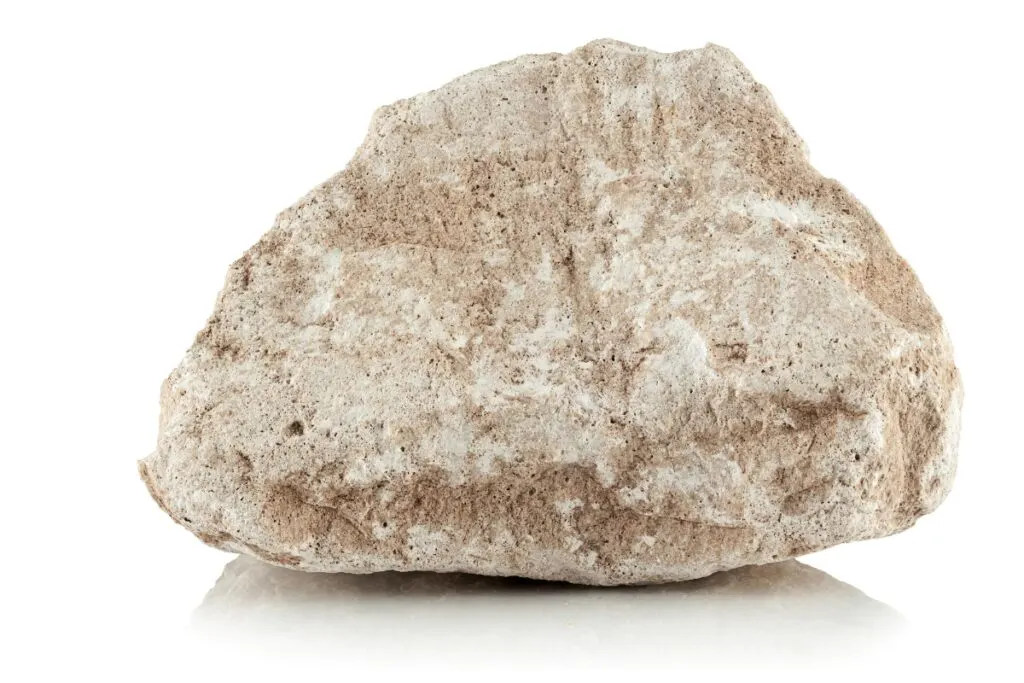
| Location | GPS Coordinates |
|---|---|
| Chase County | 38.325103, -96.648312 |
| Flint Hills | 37.902809, -96.754775 |
| Smokey Hill River | 38.791999, -99.682801 |
| Barton County | 38.476241, -98.844412 |
| Cloud County | 39.551951, -97.625463 |
| Edwards County | 37.935386, -99.359931 |
| Ellis County | 38.904838, -99.300111 |
Limestone is the state rock of Kansas, and rockhounds have no trouble finding it all over the Sunflower State. Back in the early 1900s, Kansas residents used limestone to construct houses and other structures, and many of these buildings are still around today in Kansas City.
There are many different types of limestone that exist in Kansas, and they can appear gray, white, or pink in color.
Some popular types of limestone that you might run into during your Kansas travels are Neva Limestone, Fort Hayes Limestone, Bethany Falls Limestone, and Cottonwood Limestone. Chalk is also common in this state, and it forms impressive structures, such as the Chalk Pyramids.
If you’re not sure where to search for limestone in Kansas, find the nearest limestone quarry and start there! Chase County has three major quarries, and the other areas in eastern Kansas are known for their high-quality limestone.
Recommendation box: All tools and equipment you need for rockhounding and rock identification* (Amazon links):
1. Estwing Rock Hammer – Light, comfortable, and extremely durable hammer.
2. Estwing Geologist Pick – Classic and the most trusted paleo pick in the world.
3. Finder 12-inch Chisels – Heavy-duty chisels set with hand protection.
4. Mini Handle Shovel – This is a great tool for digging deep in the dirt.
5 Ironclad Utility Work Gloves – Breathable, but they also protect the areas requiring them most.
6. 3M Safety Glasses – Comfortable and efficient goggles for rockhounding.
7. Convoy 8+ UV Light – 365nm UV LED flashlight with a patented glass filter.
8. Wesley’s Jewelers Loupe – High magnification options (30X and 60X) with carrying case.
9. Mohs Hardness Kit – A specially designed kit for rockhounds
*All recommended products are personally tested and regularly used by experts from this website.
Geodes
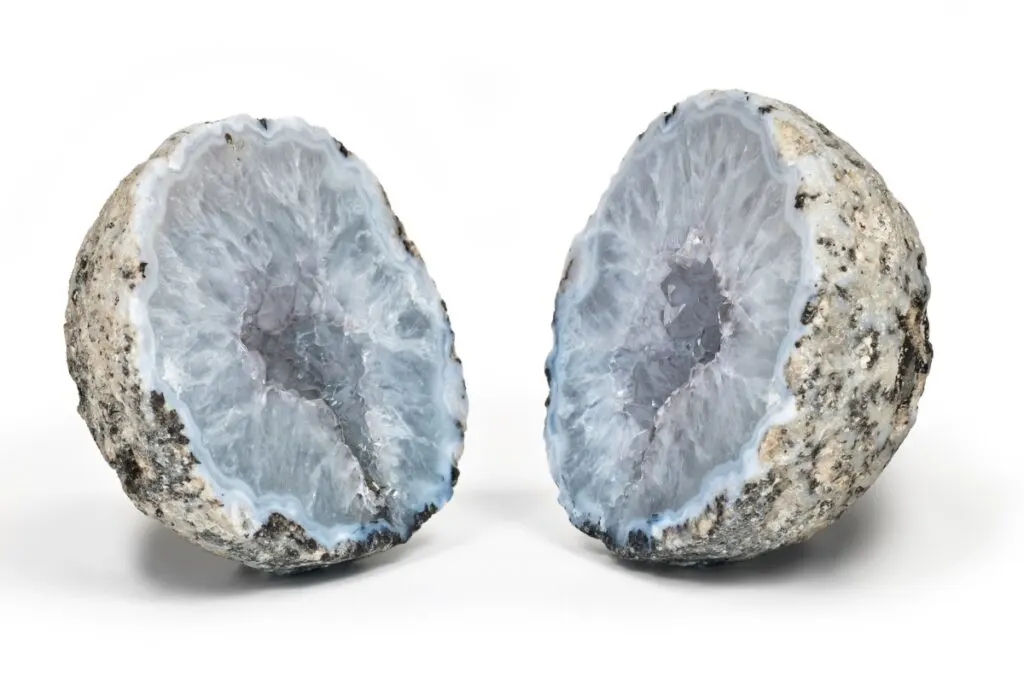
| Location | GPS Coordinates |
|---|---|
| Junction City | 39.038066, -96.823887 |
| Walnut River | 37.591312, -96.998250 |
| Cottonwood Creek | 39.736635, -95.099588 |
| Riley County | 39.322482, -96.669927 |
| Lone Star Quarry | 39.069448, -94.710143 |
| Wallace County | 38.936019, -101.814916 |
| Geary County | 39.072539, -96.905373 |
| Chase County | 38.325103, -96.648312 |
In the limestone deposits of Kansas, rockhounds often find geodes filled with chalcedony, quartz, dacite, and calcite. As you would expect, these geodes vary greatly in size depending on the location.
If you want to collect large geodes from Kansas, visit Milford Lake near Junction City, an area that’s known for its hefty geodes.
Junction City, Cottonwood Creek, and the Walnut River are some popular destinations for geode-hunters, but rockhounds also search near Wallace County, Geary County, and Chase County.
Shale
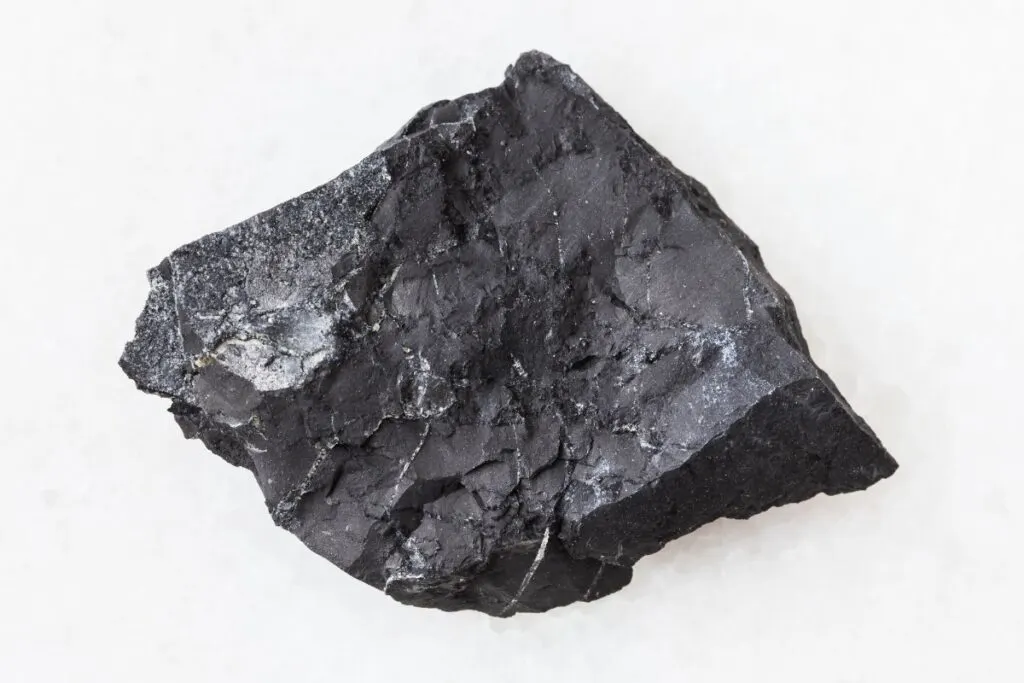
| Location | GPS Coordinates |
|---|---|
| Flint Hills | 37.902809, -96.754775 |
| Kansas City | 39.153030, -94.763535 |
| Douglas County | 38.901771, -95.331072 |
| Wyandotte County | 39.087001, -94.722881 |
| Smokey Hills | 38.794081, -98.004286 |
| Red Hills | 37.341518, -99.080023 |
Kansas is overflowing with sedimentary rocks, and in addition to limestone, this state has an abundance of shale. Kansas shale is composed of fine, mineral-rich silt, and it’s usually soft and brittle.
Flint Hills is known for the many types of shales that create its magnificent landscape. In the Sunflower State, shale is often found alongside limestone, so you’ll often notice the two together.
Although Kansas has plenty of flat areas, the hills in various areas of the state have plenty of shale. The Red Hills, Smokey Hills, and Flint Hills all have massive amounts of this sedimentary rock.
TIP: Many rockhounds are passionate about finding flint in the U.S. However, it is much harder to find than one might think so. Find out more in the article below:
Where to Find Flint: Best Environments & Locations (USA)
What Minerals Are Found in Kansas
As you collect rocks in the Sunflower State, don’t forget to pack some minerals to take home as well, such as:
Galena
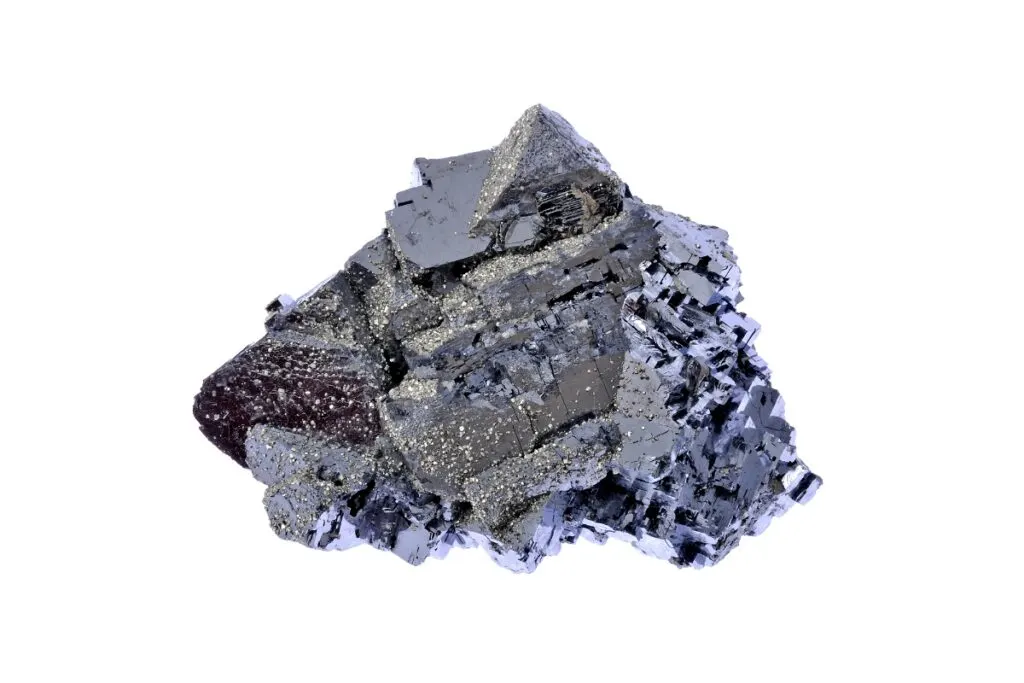
| Location | GPS Coordinates |
|---|---|
| Cherokee County | 34.224100, -84.445381 |
| Baxter Springs | 37.017960, -94.721512 |
| Galena | 37.072858, -94.653407 |
| Tri-State District | 37.005437, -94.627317 |
| Lincoln | 37.455000, -95.152827 |
| Treece | 37.000803, -94.845267 |
Galena, a mineral that’s known for its silvery shine and cubed shapes, was designated the state mineral of Kansas in 2018. In southeast Kansas, there’s an old mining city with the name Galena due to its large quantities of the mineral.
Although galena is an essential ore of lead, it’s also a source of silver. As a matter of fact, Kansas galena can contain 1 to 2 percent silver. When you search for this mineral in the Sunflower State, you’ll often discover it next to calcite or sphalerite.
Before you go and collect Kansas galena, it’s important to remember that this mineral can be toxic in certain cases. With that being said, it’s generally safe to handle as long as there is no lead dust present and you do so with caution.
Cherokke County, Baxter Spring, and Galena are all great sources for galena. The Tri-State District is another popular spot for this mineral.
Dolomite
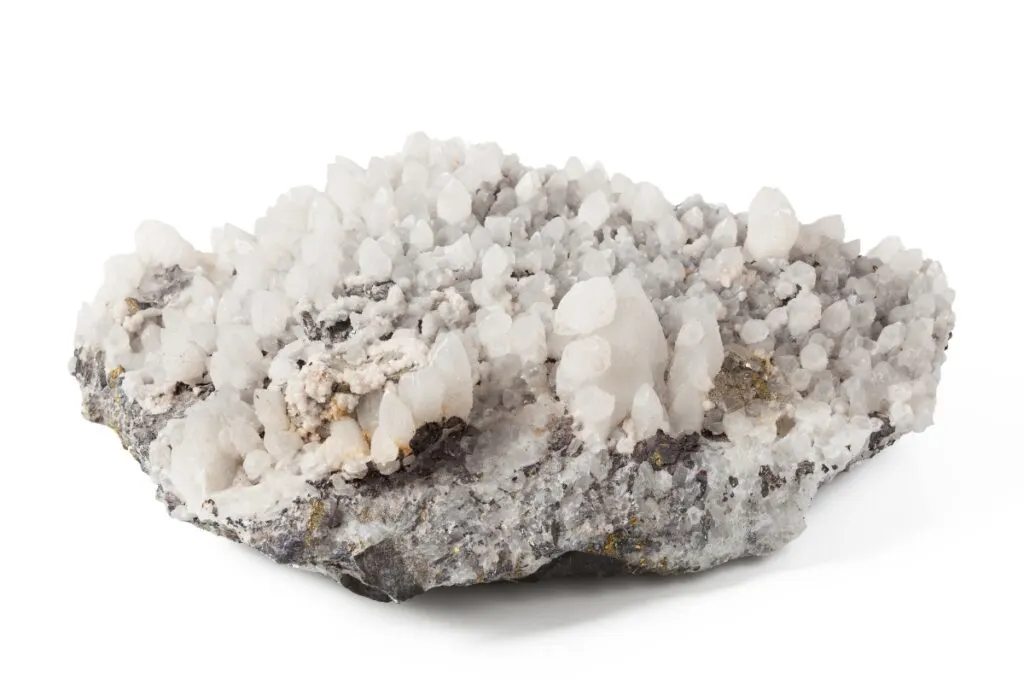
| Location | GPS Coordinates |
|---|---|
| Rice County | 38.342791, -98.216501 |
| Clark County | 37.203918, -99.769394 |
| Anderson County | 38.254953, -95.307051 |
| Butler County | 37.834245, -96.818940 |
| Reno County | 37.957403, -97.954075 |
| Cherokee County | 34.224100, -84.445381 |
It’s true that high-quality dolomite crystals can be tough to find, unless you are in Kansas. The Sunflower State has stunning light pink dolomite crystals that form in a shape similar to Dogtooth Spar Calcite.
Even though pink is one of the most popular colors, Kansas dolomite also appears clear, white, gray, brown, and even green.
There are dolomite sites scattered around Kansas, and two famous ones are the Stone Corral Dolomite layer and the Day Creek Dolomite layer. The Stone Corral Dolomite is located in Rice County, while the Day Creek Dolomite is located in the famous Red Hills of Clark County.
Opal
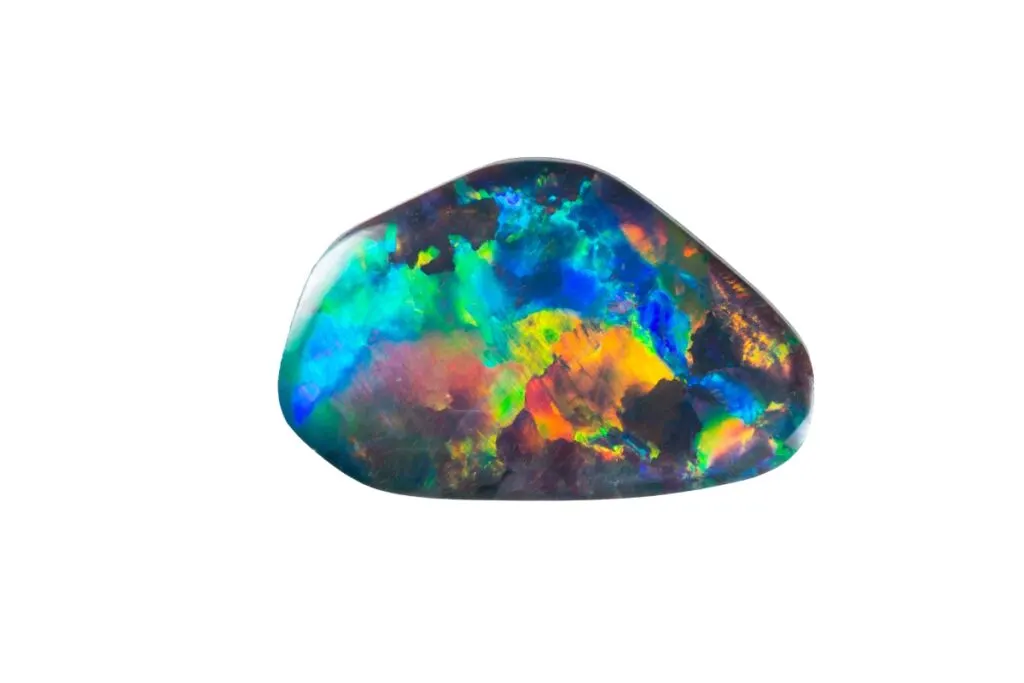
| Location | GPS Coordinates |
|---|---|
| Wallace County | 38.918738, -101.586222 |
| Ellsworth County | 38.726270, -98.232586 |
| Hill City | 39.363401, -99.852056 |
| Bluff Creek | 37.081877, -97.872413 |
| Mount Casino | 37.228816, -99.758098 |
| Ness County | 38.467876, -99.890352 |
| Rawlins County | 39.833097, -101.022049 |
Before you search for opals in Kansas, keep in mind that the opals from this state are not the typical gem-grade kind that you might want for your collection. Instead, most of the opals found in this state are common opals, which are colorless, white, or gray.
One type of common opal that almost any rockhound would want in their collection is the moss opal, a common opal that contains exquisite, dark green patterns of manganese oxide.
When a white common opal displays these dark green patterns, it’s called a moss opal, and you can collect them in Wallace County, Kansas.
Wallace County, Ellsworth County, Ness County, and Rawlins County are counties that contain common opal, and for moss opals, Wallace County should be your first stop.
There are other areas in Kansas where rockhounds find opals, such as Bluff Creek or Mount Casino, but the four counties listed above are the places that have produced the most in this state.
TIP: First, it should be said that “opal” is a geological term, while “opalite” is a pure trade name. Check out main differences between opal and opalite in the article below:
Opal vs. Opalite: 6 Crucial Differences (Are They Same?)
Sphalerite

| Location | GPS Coordinates |
|---|---|
| Cherokee County | 34.224100, -84.445381 |
| Baxter Springs | 37.017960, -94.721512 |
| Treece | 37.000803, -94.845267 |
| Harris Mine | 37.060982, -94.815462 |
| Ballard Mine | 37.016679, -94.758213 |
| Mid-Continent Mine | 37.004111, -94.861047 |
Kansas sphalerite comes in white or dark brown colors and takes on a triangular shape similar to that of a pyramid. Rockhounds in this state often find sphalerite intertwined with calcite, dolomite, or galena.
This mineral has a striking metallic luster, and the best specimens are often discovered in the lead and zinc mines of Kansas.
As you collect sphalerite from the Sunflower State, remember that this mineral is extremely soft, only 3.5 to 4 on the Mohs scale. It’s brittle, so if you want the mineral to keep its perfect cleavage, use caution when collecting sphalerite for your collection!
As previously stated, sphalerite is usually discovered in the lead and zinc mines of Kansas. Even though you might not be able to enter the mine itself, the surrounding areas of Harris Mine, Ballard Mine, and Mid-Continent Mine are perfect places to visit for this mineral.
Anhydrite

| Location | GPS Coordinates |
|---|---|
| Ellsworth County | 38.721851, -98.228895 |
| Rice County | 38.374559, -98.184229 |
| Clark County | 37.436540, -99.913590 |
| Barber County | 37.284674, -98.736191 |
| Sun City | 37.370397, -98.916092 |
| Lawrence | 38.966178, -95.219018 |
One mineral that you might not expect to see in Kansas is anhydrite, a form of gypsum that’s usually collected from desert environments.
Essentially, anhydrite is dried-up gypsum, so when exposed to moisture, anhydrite can actually revert back into gypsum. I
n Kansas, anhydrite is almost never found on its own, so you’ll probably uncover it next to chalcopyrite, galena, or other sulfide or sulfate minerals.
If you’re looking to bring home a white or opaque mineral with long, unique formations, then anhydrite is the mineral for you!
Although anhydrite on its own is white or opaque, surrounding minerals can tint it, giving it color. It all depends on the location.
For example, anhydrite found near Red Hills in Clark County takes on a red color due to the surrounding iron oxide. Clark County, Sun City, and Ellsworth County are all great sites to search for gypsum in the Sunflower State.
TIP: Mineral collecting is an exciting hobby, but over time, boxes with minerals and rocks start to take up half the house. Check out the guide on selling rock collection in the article below:
5 Proven Tips on Selling Your Rock Collection (How & Where)
FAQ About Common Rocks & Minerals in Kansas
Want to learn more about the common rocks and minerals of Kansas? Let’s dive into the following FAQs:
What Rare Rocks Can You Find in Kansas
If you’re looking for rare rocks in Kansas, you’re in luck! The Sunflower State has an interesting variety of rare rocks, including geodes, Lake Superior Agates, jaspers, and even rare igneous rocks, such as kimberlites and lamproites.
Even though Kansas doesn’t have any active volcanoes, some igneous rocks, such as kimberlites, were transported into the state via glacial drift.
Kimberlites are rough, dark-colored igneous rocks that are rare variants of peridot, but they are mostly known for containing diamonds.
Lamproites are the only other igneous rocks that exist in Kansas, and these rough, black stones can also contain diamonds.
So, technically, rockhounds can find precious diamonds in Kansas if they search for kimberlites and lamproites.
In addition to these rare igneous rocks, Kansas also has a special geode called a Septarian Nodule. Septarian Nodules are geodes that contain fossilized mud bubbles that formed 50 to 70 million years ago. These geodes are composed of calcite and aragonite, which form brown and white patterns.
Rockhounds can find Septarian Nodules in the Blue Hills, and occasionally, they are picked up near Trego and Wallace Counties. Kansas kimberlites are only found in specific areas of the state, including Riley County, Marshall County, and areas near Tuttle Creek Lake.
Lamproites are typically discovered near the Woodson and Wilson County line. For agates, crystal-filled geodes, or jaspers, take a look at the counties and areas listed in the agate section above.
What Rare Minerals Can You Find in Kansas
Moss opals, garnets, celestite, Satin Spar, and sphalerite are some of the most popular rare minerals that rockhounds find in Kansas.
And although it’s technically not a mineral, jelinite amber is the most famous Kansas gemstone, so it’s a great addition to any rockhound’s collection.
Formerly known as Kansasite, jelinite is a rare gemstone that’s composed of tree resin from the Cretaceous period, and it’s popular among collectors due to its stunning orange-gold color.
Jelinite is typically found near the Smoky Hills and the Smokey Hill River, so be sure to stop by those areas during your travels. For moss opals, garnets, and other rare minerals, visit Rice County, Cherokee County, and Wallace County.
TIP: When you use rock tumblers, you will have plenty of used grit and slurry on your hands at the end of your work. Check out a guide on what to do in the article below:
Proven & Safe Tips: Disposing of Rock Tumbling Grit & Slurry
What is the Most Famous Rock or Mineral Found in Kansas
There are plenty of rocks and minerals in Kansas, but galena outshines all the rest in this state. As a matter of fact, galena was so plentiful in the state of Kansas that one particularly abundant area renamed their town Galena.
Although galena is a beautiful mineral with a silvery shine, it is important to Kansas because of the role it played in the economy by producing lead and zinc.
The Tri-State Mining District in the southeastern corner of the state was once one of the most important producers of lead and zinc in the world.
While it’s not discussed as much as lead or zinc, galena is also a producer of silver. Sadly, the silver locked up in galena is fairly low, so it’s generally not mined for its silver content.
In addition to the Tri-State Mining District, rockhounds also visit Galena, Treece, and Cherokee County for this attractive mineral. Baxter Springs is also a popular destination for rockhounds who are on the hunt for galena and other collectible minerals.
BTW: If you are looking for the best UV light for rockhounding, find out my picks below (Amazon links):
- BEST OPTION: Convoy 8+ 365nm UV LED Flashlight with Patented Glass Filter
- BUDGET OPTION: Karrong Rechargeable 1200 Lumen 395nm UV Flashlight
- OPTION FOR INDOOR USAGE: Prime Upgraded Big Chip 396nm UV
Conclusion
Kansas is one of the most underrated rockhounding states, and it has much more to offer than you might expect!
Septarian nodules, galena, opals, kimberlites, and garnets are just a few of the rocks and minerals that you can collect in the Sunflower State.
Whether you visit Cherokee County, Wallace County, or even the Blue Hills during your journey, there are all types of rocks and minerals in this state just waiting to be uncovered!
TIP: Kansas may not seem like a good spot for rockhounding at first; however, the state indeed holds plenty of interesting specimens. Check out the complete guide in the article below:
Rockhounding in Kansas: Best Locations & What to Find
